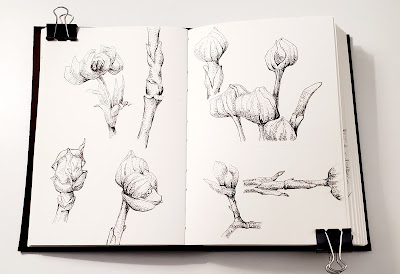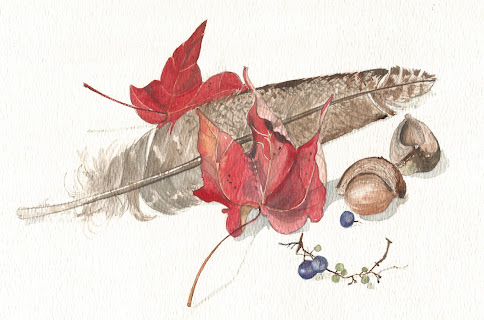This is the story behind a coloured pencil drawing. How observing a woodcock resulted into a detailed drawing of this wonderful bird.
Years ago, my family lived in the woodlands of Kalmthout, Belgium. One day I noticed that a few autumn leaves were moving. The strange thing was that they kept on moving while there was no wind. It is universal knowledge that what one does not know, one fails to see. Only upon inspecting the autonomously moving leaves with binoculars, I noticed a perfectly camouflaged woodcock. It blended in so perfectly that even a passing, prowling cat didn’t notice it. The woodcock, also named a timberdoodle, stayed in our garden for a few days. Clearly it was migrating and in need of some rest.
What a fascinating bird it is! Apparently, when there is danger, this bird can pick up its young and fly the young bird to a safe place. Not surprisingly, this is rarely seen because woodcocks are masters in camouflage, not only because of their mottled brown, beige and black 'wood with leaves' resembling plumage but also because of their 'lie low' behaviour. Finding a woodcock is difficult, finding a woodcock with chicks is even harder, and then seeing a woodcock airlifting its juveniles to another place must feel like a miracle. (Most will miss this extremely rare occasion anyway by grabbing for our cameras).
That said, I had a neighbour who saw a common starling (Sturnus vulgaris) airlifting its young to a nearby bush -30-50 cm above ground level- because of a nearby cat. I was so stunned to hear this that I subjected the poor man to a detailed investigation eventually finding no criminal charges of lying or excessive use of imagination. The starling had taken its young by the wing and just dropped in a thick bush. Little birds weigh nothing, as you may have experienced or know (they have hollow bones). I wish I had seen that! Not in the least because it shows that birds can do such a thing and that the woodcock story isn't fantasy.
Much inspired by this wonderful bird, I sat down to draw our woodcock. I gave the lonely bird an admiring partner.
Paula Kuitenbrouwer
Paula holds an MA degree in Philosophy and works as an artist in Utrecht. She is the owner of www.paulakuitenbrouwer.com.
Contact Paula freely for commissions.
















